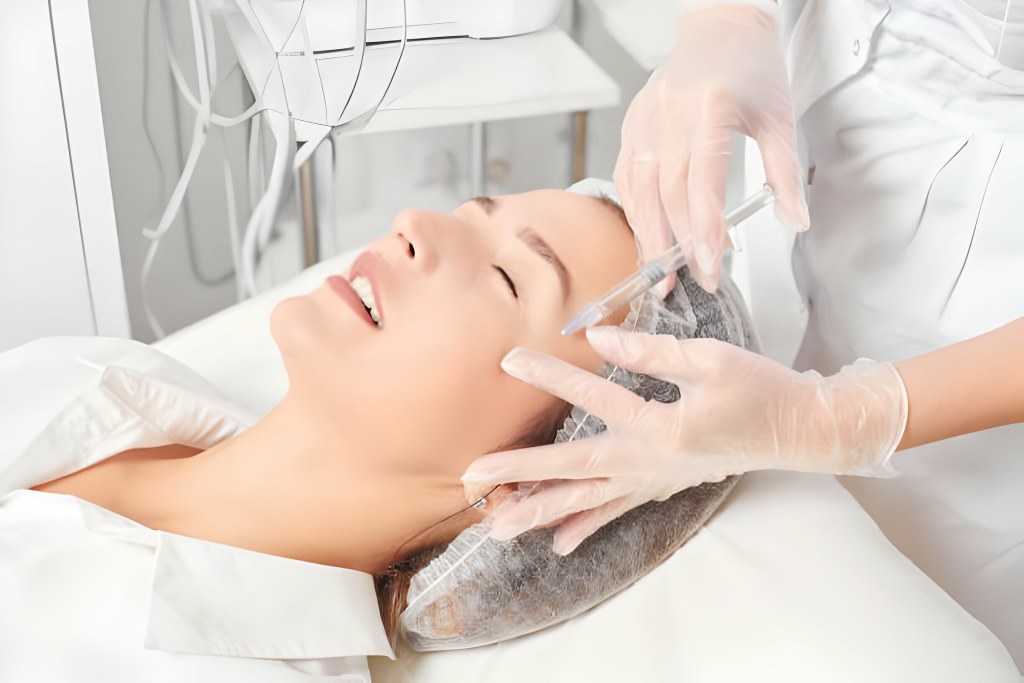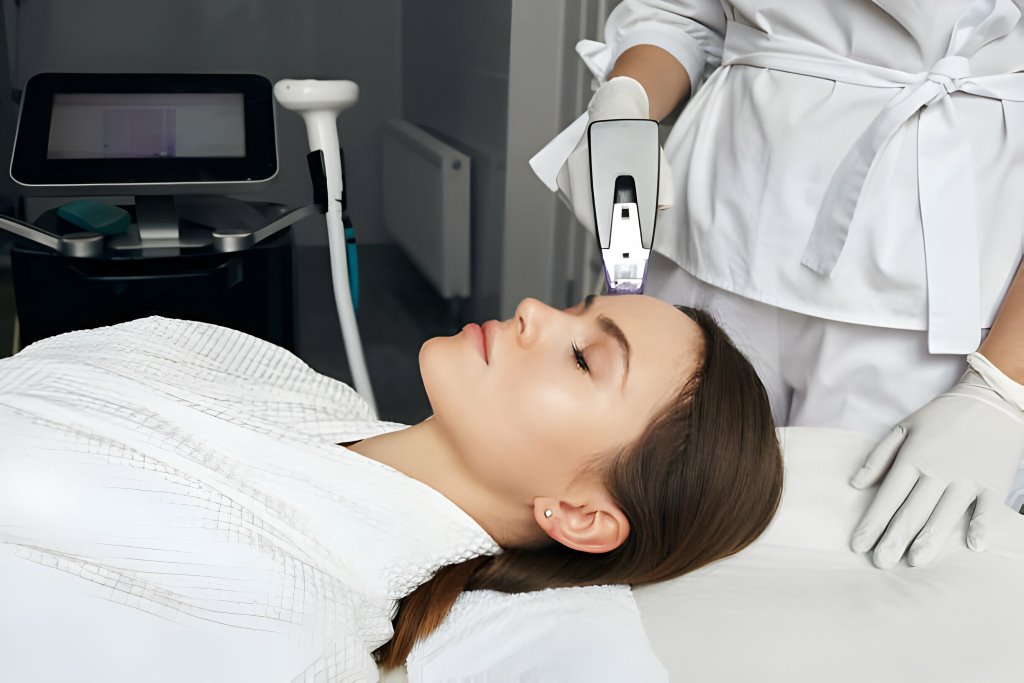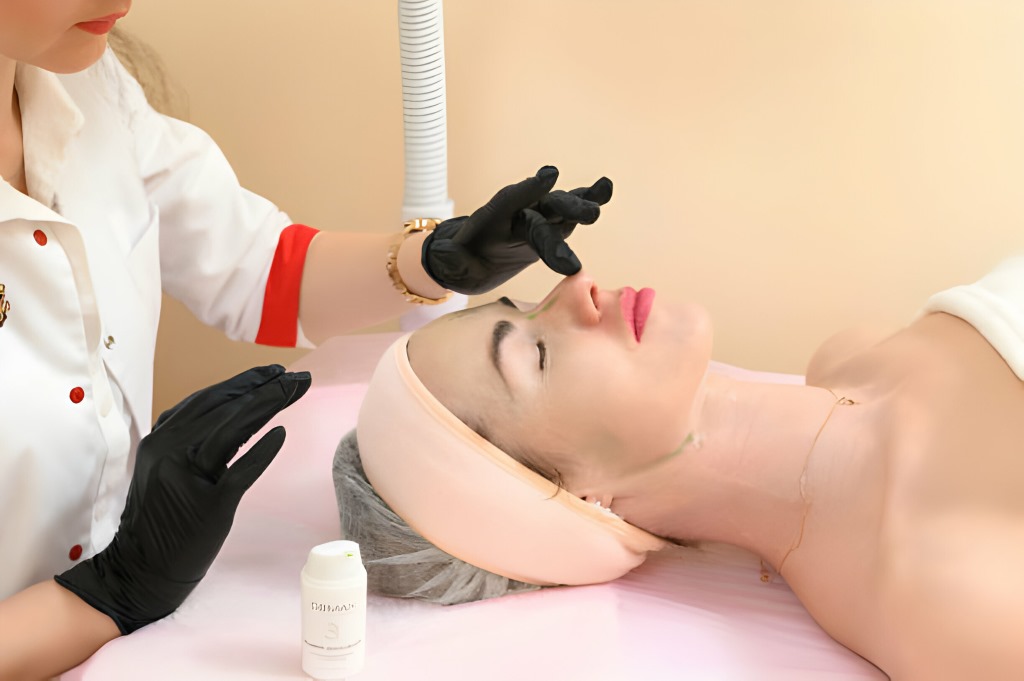In the world of beauty and skincare, people are constantly in search of solutions to combat the signs of aging and maintain a youthful appearance. One fascinating area that has gained popularity is skin tightening treatments.
These procedures offer promises of rejuvenation reduced sagging and a firmer youthful complexion. To truly grasp the effectiveness of these treatments it’s crucial to understand the principles that underlie them.
This article aims to demystify the secrets behind age-defying beauty by delving into the science behind skin-tightening treatments and exploring their mechanisms for success. If you are looking for skin tightening treatments then, you may check the online website.
Understanding the Aging Process

Before we dive into skin tightening treatments it’s essential to grasp how natural aging impacts our skin. As we age our skin undergoes changes characterized by a decline in collagen and elastin production.
Collagen and elastin are proteins for provide structure and elasticity to our skin. With their reduced production our skin becomes more susceptible to sagging, wrinkles, and fine lines. Moreover, factors such as sun exposure, genetics, and lifestyle choices can accelerate this aging process leading to signs of aging on our skin.
The Importance of Collagen and Elastin in Forma Skin Tightening
Collagen and elastin are essential proteins that play crucial roles in maintaining the integrity and firmness of the skin. Collagen provides structural support, while elastin allows the skin to stretch and bounce back. However, as we age, the production of these proteins gradually decreases, leading to a loss of firmness and elasticity in the skin, which manifests as sagging and wrinkles.
Forma skin tightening treatments target these specific concerns by stimulating the production of collagen and elastin in the skin. By harnessing advanced radiofrequency technology, Forma treatments effectively reverse the signs of aging by promoting the regeneration of these vital proteins. This results in firmer, smoother skin with improved elasticity and reduced wrinkles.
Common Approaches for Skin Tightening
There are methods, for skin tightening both noninvasive and invasive. Noninvasive procedures, like radiofrequency and ultrasound therapies, help stimulate the production of collagen resulting in a-looking skin.
On the other hand, laser treatments and surgical facelifts offer noticeable outcomes by specifically targeting sagging skin. Additionally incorporating anti-aging skincare routines that include retinoids and ingredients that boost collagen production can also contribute to achieving skin
1. Radiofrequency (RF) Therapy

RF therapy has become an invasive method for enhancing skin tightness. This technique employs radiofrequency energy to gently heat the layers of the skin triggering collagen and elastin production. The controlled heat encourages tissue remodeling resulting in tighter skin.
Additionally, RF therapy can enhance blood circulation contributing to a complexion. The procedure is relatively painless with minimal downtime requirements making it an appealing choice for individuals seeking rejuvenation without resorting to procedures.
2. Ultrasound Therapy
Ultrasound therapy also known as Ultherapy utilizes ultrasound energy to target selection of the skin. By harnessing this energy, collagen and elastin production are stimulated leading to a tightening effect.
Ultrasound therapy is highly effective in lifting. Firming the skin on the face and neck. Its precision allows practitioners to target layers of the skin without impacting surrounding tissues. People appreciate Ultherapy as it delivers results with discomfort and recovery time making it a popular non-invasive procedure.
3. Laser Skin Tightening
Laser technology is utilized in laser skin tightening procedures to stimulate collagen production and tighten skin. The laser energy is absorbed by the skin creating controlled damage in layers. This triggers the body’s natural healing response encouraging collagen and elastin production.
Laser skin tightening is versatile with laser wavelengths addressing concerns on the face, neck, and other body areas. Depending on treatment intensity downtime can vary. Most individuals experience side effects.
The Science Behind Skin Tightening Treatments
Skin tightening procedures utilize principles to improve the production of collagen and elastin proteins for maintaining skin elasticity. By using radiofrequency and ultrasound technologies thermal energy is generated to stimulate collagen synthesis.
Laser treatments on the other hand create controlled damage to initiate collagen remodeling. These methods leverage mechanisms to revitalize the skin resulting in a more youthful appearance.
1. Collagen Contraction through Heat
A common factor in skin tightening treatments involves applying controlled heat to the skin. By inducing collagen contraction through heat immediate skin tightening occurs. The denaturation of collagen fibers results in a firm structure.
While the impact is not permanent it plays a role, in enhancing skin tightness and texture. Moreover, the heat stimulates fibroblasts which are responsible for producing collagen. This triggers a chain reaction of events that lead to long-term skin firming.
2. Promoting New Collagen and Elastin

In addition to the effect of collagen contraction skin tightening treatments aim to stimulate the production of collagen and elastin. This process called neocollagenesis involves generating collagen fibers to replace those that are damaged or depleted.
By encouraging neocollagenesis these treatments contribute to lasting improvements in skin firmness and elasticity. The synthesis of elastin also enhances the skin’s ability to bounce back resulting in a resilient appearance.
3. Controlled Tissue Repair
Many methods used for skin tightening rely on controlled tissue injury followed by repair. These treatments deliver targeted energy to the skin creating injuries in its layers.
In response, the body initiates a natural healing process that involves producing collagen, elastin, and proteins. This controlled injury and repair mechanism aids in reshaping the architecture of the skin leading to a more lifted look.
Factors Affecting Treatment Effectiveness
Skin tightening procedures have been found effective, for people although the results can vary depending on factors. These factors include:
- Age: Younger individuals who have skin laxity may see noticeable improvements compared to older individuals who show advanced signs of aging.
- Skin Type: Different skin types react differently to treatments. Factors like the thickness of the skin, pigmentation, and texture can influence which skin tightening procedure is chosen and how effective it is.
- Lifestyle Choices: Smoking excessive sun exposure, and poor nutrition are factors that can have an impact on skin health and affect how well skin-tightening treatments work.
- Treatment Area: The specific area being treated also plays a role in how effective the treatment will be. Certain parts of the body may respond better to skin-tightening treatments than others.
- Treatment Plan: The number of sessions required and the time between each session can affect the outcome. It’s important to follow the recommended treatment plan for results.
Conclusion
In the pursuit of timeless beauty, it is essential to understand the aspects of skin tightening treatments. These advanced procedures utilize state-of-the-art technologies that target the causes of sagging skin by stimulating collagen and elastin production for lasting outcomes.
Whether one opts for radiofrequency therapy ultrasound treatments or laser skin tightening they can embrace supported solutions to counteract the effects of aging and attain a more youthful complexion.
